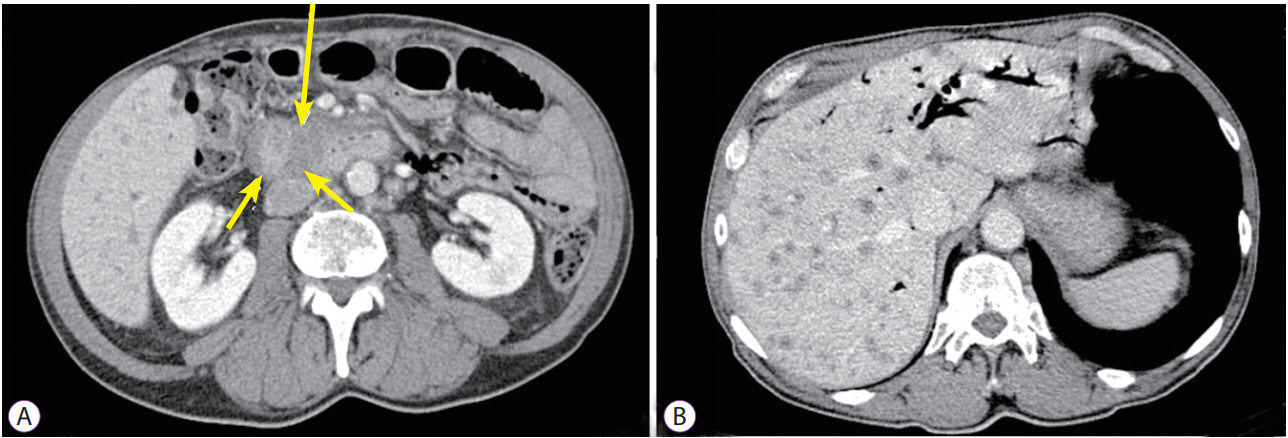Clin Endosc.
2018 Jan;51(1):109-110. 10.5946/ce.2017.111.
White Bile in Malignant Biliary Obstruction: A Poor Prognostic Marker
- Affiliations
-
- 1Division of Gastroenterology and Hepatology, Department of Internal Medicine, University of New Mexico, Albuquerque, NM, USA. tarunrustagi06@gmail.com
- KMID: 2403642
- DOI: http://doi.org/10.5946/ce.2017.111
Abstract
- No abstract available.
MeSH Terms
Figure
Reference
-
1. Hashmonai M, Kam I, Schramek A. The etiology of “white bile” in the biliary tree. J Surg Res. 1984; 37:479–486.
Article2. Ahuja V, Garg PK, Kumar D, Goindi G, Tandon RK. Presence of white bile associated with lower survival in malignant biliary obstruction. Gastrointest Endosc. 2002; 55:186–191.
Article3. Geraci G, Sciumè C, Pisello F, Li Volsi F, Facella T, Modica G. Presence of white bile in malignant biliary obstruction is associated with poor prognosis: personal preliminary observations. Langenbecks Arch Surg. 2007; 392:61–65.
Article
- Full Text Links
- Actions
-
Cited
- CITED
-
- Close
- Share
- Similar articles
-
- Endoscopic Stent Placement in the Palliation of Malignant Biliary Obstruction
- Management of Simultaneous Biliary and Duodenal Obstruction: The Endoscopic Perspective
- Two Double Stents Insertion for Commen Bile Duct and Duodenal Obstruction Caused by Pancreatic Cancer
- Clinical Significance of White Bile (Bilirubin-Free Bile) in Malignant Bile Duct Obstruction
- Management of Malignant Biliary Obstruction Combined with Duodenal Obstruction




